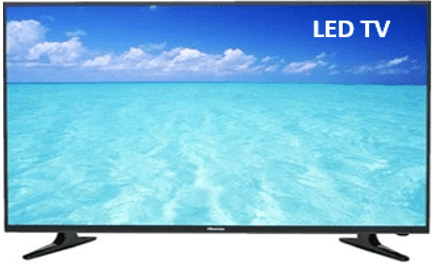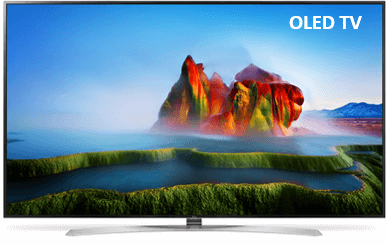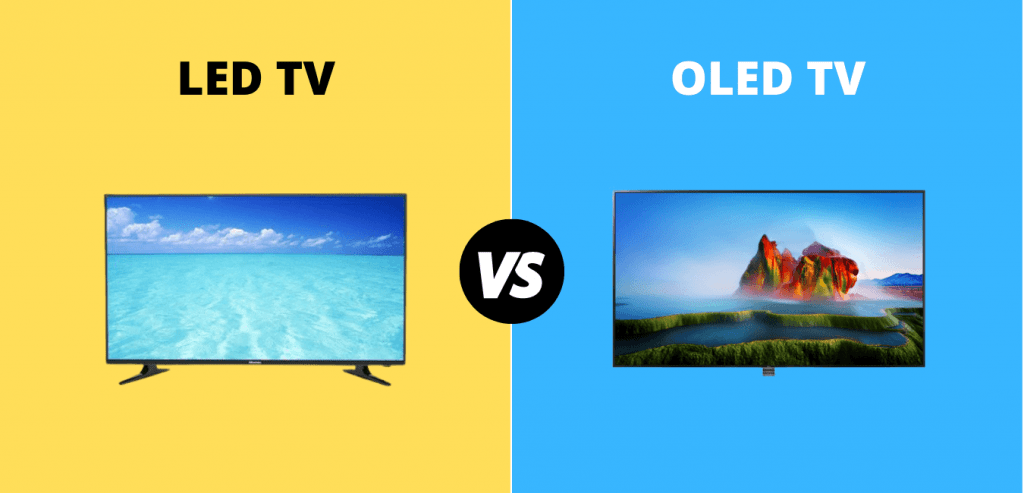The difference between LED and OLED TV can be plenty and just as puzzling (some thought it was LED with an ‘O’). However, there are clear differences that make the two TV types just as special and efficient in their ways. So how are they different from each other, and what goes on ‘behind the screens’? Let us find out.

LED Tv is almost synonymous with the ‘flat TV.’ It is safe to say that the television got slim only because of the LED technology that could be applied. Technology is all about how the ‘backlight’ is created. This technology has successfully replaced the previous CCFL or the Cold-Cathode-Fluorescent light technology. However, the current-day television utilizes the LED as its backlight source, thus, offering you ultra-slim television sets that look sleek. According to the experts, the LED is the LCD television with LED backlighting.
Speaking of the LED technology, the details reveal that this TV type is further bifurcated into two types. These are the IPS plane (In-Plane Switching) and the VA( Vertical Alignment) type. Here, the IPS is all about a better viewing experience, and the VA has better contrast and is great for watching in the dark. Also, the ‘Local Dimming’ feature in some of the LED models offers the ability to make certain screen areas darker to enhance the Blacks. Currently, the LED television has been ruling the TV-viewing market as it is quite affordable for the masses. This TV type is economical and is available in most sizes and resolutions. The size ranges from 24 inches to 85 inches and more, along with enhanced brightness in most designs. The difference between LED and OLED TV mainly lies in the contrast that the latter offers, something we will explore in a while.
Advantages of LED TV
- The LED has a longer lifespan and is the prime feature when it comes to OLED TV VS LED TV.
- LED TV is generally low on maintenance, thus making them a favorite for the complete family.
- This TV type is highly efficient.
- The LED Tv types are commercially available, thus a hot favorite.
- Users prefer the LED type mainly because these are high on energy saving.
- No heat is produced in this TV type.
- This type offers a wider range of brilliant saturated colors.
Disadvantages of LED TV
- The LED Tv suffers from a lack of standardization.
- The LED Tv is usually high on the price bracket.
- Mounting the LED tv on the wall is quite a task.
- The contrast ratio of the LED Tv is not as good as compared to Plasma TV.
Also Read: Best LED TV in India
What is a OLED TV?

The OLED stands for ‘Organic Light Emitting Diode.’ Lately, the OLED Television sets have caught the fancy of the users as they can create both lights the color from the same diode when connected to the source of electricity. This way, the OLED Tv does not require a separate backlight as each Pixel is a light source on its self. The technology is so ‘advanced’ that it enables the television sets to get as slim as possible, flexible, and also ‘rollable’! Imagine having to roll away your television set and tuck it away when traveling or packing. The fact that the OLED TV can receive its Luminance and Power offers it an ‘edge’ above the other technology; this is the major difference between LED TV and OLED TV.
However, LG is the only brand currently that ‘owns’ the manufacturing of the OLED TV. But, Sony has also developed an agreement with LG that allows the former to utilize the LG OLED panels into Sony TV devices, quite a deal! However, both the brands have good processors that greatly reduce the issue of ‘banding’ and Artifacting, thus, offering better colors. Following the bandwagon, the other brands that have been following Sony are the likes of Philips, HiSense, Panasonic, among others.
Advantages of OLED TV
- The OLED TV is as flexible as flexible can get ( these are the ‘Yogis’ of the TV world.’
- The OLED substrates can be made of Plastics instead of Glass as in the other TV types mainly because the light-emitting layers of OLED are much lighter.
- As they do not require any backlighting like the LCD thus, they consume very little electricity.
- Being essentially plastics, the OLEDs can be large (for the King-size lifestyle).
- With an impressive large field of view of 170 degrees, the OLED TV offers a wider viewing range.
Disadvantages of OLED TV
- Currently, the OLED TV is expensive.
- These are highly sensitive to exposure to water.
Also Read: Best 32 inch LED TV
LED TV Vs OLED TV: What is the difference between LED TV and OLED TV?

The war between the OLED TV Vs LED TV has spiked a brand new interest in the TV-viewing market. The consumers who prefer ‘larger than life pictures’ are in for a treat with the two available types. But how do you decide? Let us take a detailed look:
FEATURES | LED TV | OLED TV |
Brightness | Excellent | Average |
Contrast Ratio | Good | Excellent |
Power Consumption | High in comparison | Less in comparison |
Thickness | Good | Quite thin in comparison |
Cost | less in comparison | Quite expensive |
Proposed Usage | Gaming, viewing | Professional display, viewing |
Pixel Density | Good | The best |
Operating Temperature | 20-80C | 100-120 C |
Response time | Low(ms) | Very high (microseconds) |
Lifetime | Long | Average |
Viewing angles | Low | High |
So, you see, the difference between LED And OLED TV is plenty and precise. However, both are at a cut-throat with each other when it comes to grabbing the viewer’s attention.
Also Read: Best PS4 Games
Difference Between LED and OLED TV: The Conclusion
The difference between LED and OLED tv is what determines their preference in the eyes of the users. However, there is no denying that both the technology are here to stay for their applications and importance. But how do you decide?
‘LED’ It Go: There is no question about the fact that LED is very much a hot favourite right now. The masses love it, and it fits in the budget just right. The sleek look and fine design are what make the product much sought-after.
OLED the Future: However, for future-conscious viewers, OLED is here to stay. The technology allows for the ‘compact’ living where ‘sleekier is better.’ However, there is no denying that the manufacturers are currently working to bring down the expenses.
Before you go:
There is a third type, also known as the ‘micro LEDs, and has sneakily emerged amid the OLED TV Vs LED TV war. Interestingly, the micro-LED is ‘closer to the OLED as compared to the LED. This technology has been launched by Samsung where minuscule modular LED panels combine the light emission and colour much like the OLED without the organic part of it. Currently, the technology is being used to manufacture large walled TVs that include the colours, Blacks, and off-angle viewing are super but with better brightness than the OLED tv. However, as for now, the ‘Micro’ is a long way away from hitting the mainstream homes any time soon, as it has its main applications on giant television sets. Nevertheless, watch the space for more information as the ‘future of viewing’ is very much in these ‘lines.’